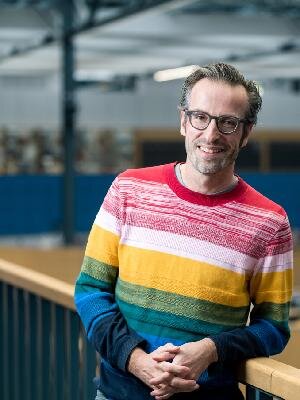

Ir. S.S. (Sander) Mulder
Ir. S.S. (Sander) Mulder
Contact
Publications
-
2022
Imagining digital twins in healthcare
Designing for values as designing for technical milieus
Bas de Boer / C. Strasser / S.S. Mulder -
2019
Adventure :
Expedition to Pragmatism and Inventivism in the design situation
Sander Mulder / Stella Boess / Jonas Fritsch -
2019
-
2016-6-27
Responsibility in design:
applying the philosophy of Gilbert Simondon
Sander Mulder -
Sander Mulder is lecturer at the Faculty of Industrial Design Engineering.
Academic Background
Sander Mulder was trained as an industrial designer at TU Delft IDE and worked for 6,5 years as an innovation consultant in various markets. Between 2003 and 2018 he worked independently with Yppah in a designerly way with NGO’s and governmental bodies e.g. a trade union, a large library, a city council, a ministry and foundations related to healthcare.
Sander sinks his teeth in the question ‘How can we think about the ontological commitment of designers and implications on their responsibility?’. To work with that question in practice wasn’t enough, hence his switch to education (since 2004) and an (external) PhD trajectory. He is inspired by French biological philosophy of technology particularly on the notion of ‘openness’ in machines and ‘design environment’.
Sander is always willing to suggest an approach after a quick assessment of the design situation. All he needs is strong black coffee and he’ll go from there...
Education
- 2022 – 2022
4th & 6th Tutorial of the Design Theory Special Interest Group of The Design Society - 2011 – 2012
University Teaching Qualification (BKO) - 1992 – 1997
Industrial Design Engineering, TU Delft
Experience
- 2015 – present
Lecturer, Delft University of Technology, Industrial Design Engineering, Department of Design, Organisation and Strategy - 2003 – 2018
Entrepreneur, Yppah
Co-creation and co-design, among others with teenagers - 2004 – 2015
Lecturer/coach/theme-champ, Eindhoven University of Technology, Industrial Design - 1999 – 2003
Consultant, Van der Meer & van Tilburg, organisation consultants for innovation and growth - 1998 – 1999
Junior consultant, KPMG Management Consulting, Human Performance Technology
Lectures/Coaches students on
I tend to focus with students on their rationale to work with a particular design method and their entanglement with the studio as a design environment.

Sander Mulder
- +31 (0)15 278 7326
- s.s.mulder@tudelft.nl
-
Room 32-B-4-210
Present on: Tue-Thu-Fri
"The liberation of machines is the precondition for the liberation of human beings" — Gilbert Simondon
Ancillary activities
-
2022-11-28 - 2024-11-26